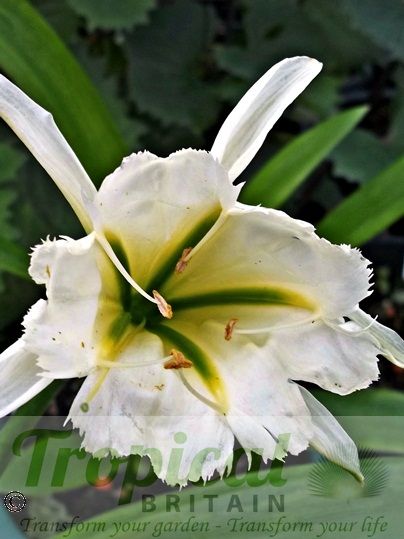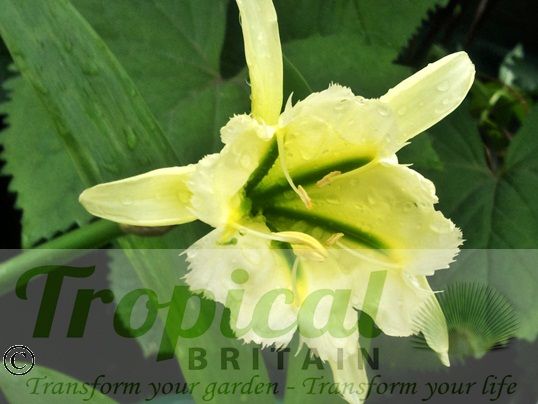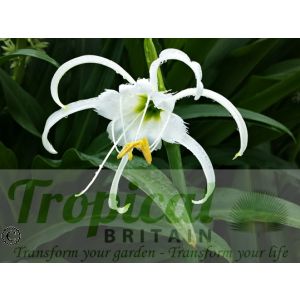- Buy 5 for £2.50 each and save 72%
Ismene 'Sulphur Queen' is a hybrid between the white-flowering vigorously-growing Ismene narcissiflora and the yellow-flowering Ismene amancaes - both Peruvian species. The cross between these species was first recorded in 1837 by the English bulb specialist Rev William Herbert, the same year he published "Amaryllidaceae, an attempt to arrange the Monocotyledonous Orders". Using Ismene amancaes as the seed parent and pollen from Ismene nacissiflora (which was at that time called Ismene calathina) Herbert named the resultant hybrid Ismene x spofforthiae and it was also later referred to as Ismene amancaes var. sulfurea. The Dutch bulb breeding company, Van Turbergen later experimented with the same two parent species and produced several hybrids, the most distinctly yellow of these resultant clones they called 'Sulphur Queen'.
The Spider Lilies (Hymenocallis, Ismene and Leptochiton) all have extraordinary exotic-looking flowers consisting of a prominent central staminal corona resembling a membranous disc surrounded by elongated spider-like lobes which are the tepals. The Andean Spider Lilies are more cold tolerant than their Central American relatives and the genus Ismene was resurrected and separated out from Hymenocallis by Alan Meerow in 1990 although these are still often referred to as Hymenocallis in the UK. They differ from Hymenocallis by having a tall neck-like pseudostem of sheathing leaf bases from which their flower stalks arise, by being fully deciduous whereas Hymenocallis can be either evergreen or deciduous and by the presence of green or green stripes on their staminal corona.
Very easy to grow, 'Sulphur Queen' brings a real sense of the exotic to any garden with its strappy leaves and yellow fragrant flowers. The flowers are at their most intensely yellow in the morning, rapidly fading to a pale yellowish-white within a few hours of opening. It requires a very sandy free-draining mix with minimum watering during the summer and kept absolutely dry in winter. Once the top-growth has died down in autumn and dormancy begins, the bulbs should be lifted carefully and their large roots heeled into sand and the trays stored overwinter in a cool dry place.
Additional Information
| Order | Asparagales |
|---|---|
| Family | Amaryllidaceae |
| Sub-Family | Amaryllidoideae |
| Synonyms | Hymenocallis 'Sulphur Queen', Ismene amancaes var. sulfurea, Ismene x spofforthiae, Ismene x spofforthiae 'Sulphur Queen' |
| Geographical Origin | Horticultural origin: both parent species from Peru |
| Cultivation | Sun or partial shade. Very free-draining sandy, gritty soil |
| Eventual Height | 60cm |
| Eventual Spread | 30cm |
| Hardiness | Cold-tolerant but not fully hardy in the ground. Best lifted in autumn and kept dry with the roots heeled into sand and kept in trays somewhere cool, dry and frost-free |
- Buy 5 for £2.50 each and save 72%

Free DELIVERY
ON ALL ORDERS OVER £99THIS OFFER IS VALID ON ALL OUR STORE ITEMS.














